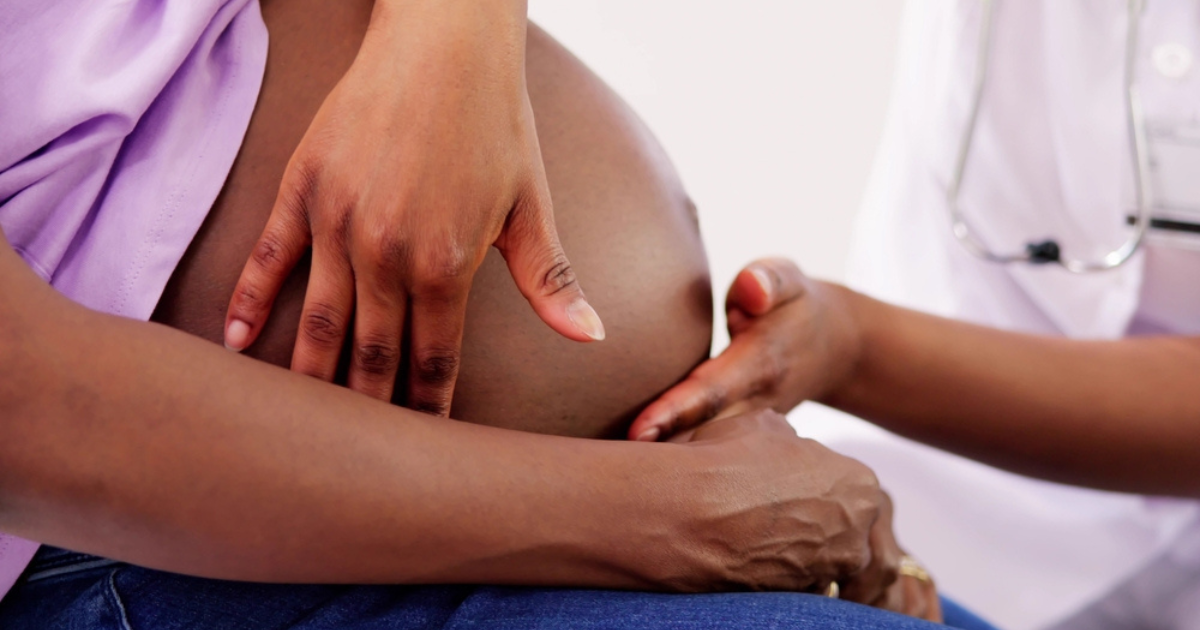
Knowledge is power when it comes to pre-eclampsia

Sarah Falkland assumed that because she was healthy, her pregnancy would be smooth sailing. But then she was diagnosed with pre-eclampsia, a condition that’s potentially life-threatening for both mother and baby. Below, she shares her story to help educate people about pre-eclampsia during Women’s Health Awareness Month.
The first sign was slightly raised blood pressure, which was picked up at Sarah’s first prenatal appointment. However, by the end of the appointment, a second reading came back normal. “This became the pattern at all my appointments. It would be a little high at first, but then it would go back to normal,” says Sarah, who was a practising nurse at the time.
Several weeks later, at her first scan, Sarah had additional blood tests that use medical technology to check for certain risk factors. These included Pregnancy Associated Plasma Protein-A (PAPP-A) and Placental Growth Factor (PLGF) tests. The PAPP-A test checks the level of a protein that’s needed for the implantation process and to maintain a healthy placenta, which provides oxygen and nutrients to the baby in the womb during pregnancy.
Low levels of PAPP-A can signal pre-eclampsia, a pregnancy-related disorder that can affect multiple organs, including a woman’s heart, liver and kidneys. The most common indicators are high blood pressure (hypertension) and excess protein in the urine (proteinuria). Pre-eclampsia affects as many as one in 10 pregnancies and can be fatal if untreated. Some babies need to be delivered early to avoid complications.
PLGF is another protein that, when low, can indicate pre-eclampsia risk. “At the time, I wasn’t diagnosed with pre-eclampsia, but I was told that I was at a high risk of developing it before my baby was full-term,” explains Sarah. “I was referred to a blood pressure clinic after those tests so that I could be monitored weekly. At around 34 weeks, I was diagnosed with pregnancy-induced hypertension, and then my pre-eclampsia diagnosis followed about a week later.”
Sarah and her baby continued to be closely monitored with the support of various medical technologies. When her medications were no longer able to control her blood pressure, she knew it was time for her daughter to be delivered. “I was at 38 weeks, and my body was clearly struggling. I was getting puffy, and my rings were tight. For me, it was the sign I needed to be sure that an induced delivery was the best thing for my baby,” she remembers. “During labour, my blood pressure skyrocketed, and my baby went into foetal distress. I was very scared and was rushed for an emergency Caesarean-section.”
“Fortunately, my baby was fine. At first, I thought I was, too,” Sarah explains. “I didn’t know that pre-eclampsia can still affect you after the birth. My blood pressure was high when I had my first postnatal check-up, so I had to go back on medication to control that. Also, even 12 weeks later, my kidney function wasn’t totally normal. My daughter is now two, and I’m still dealing with the psychological impact.”
Experiencing pre-eclampsia was so traumatic that Sarah vowed to help other women. To that end, she founded Mission Pre-Eclampsia to support and educate women. “I decided to channel my pain to raise awareness and let women know they don’t have to go through this alone. The more we talk about it, the more lives we can save.”








